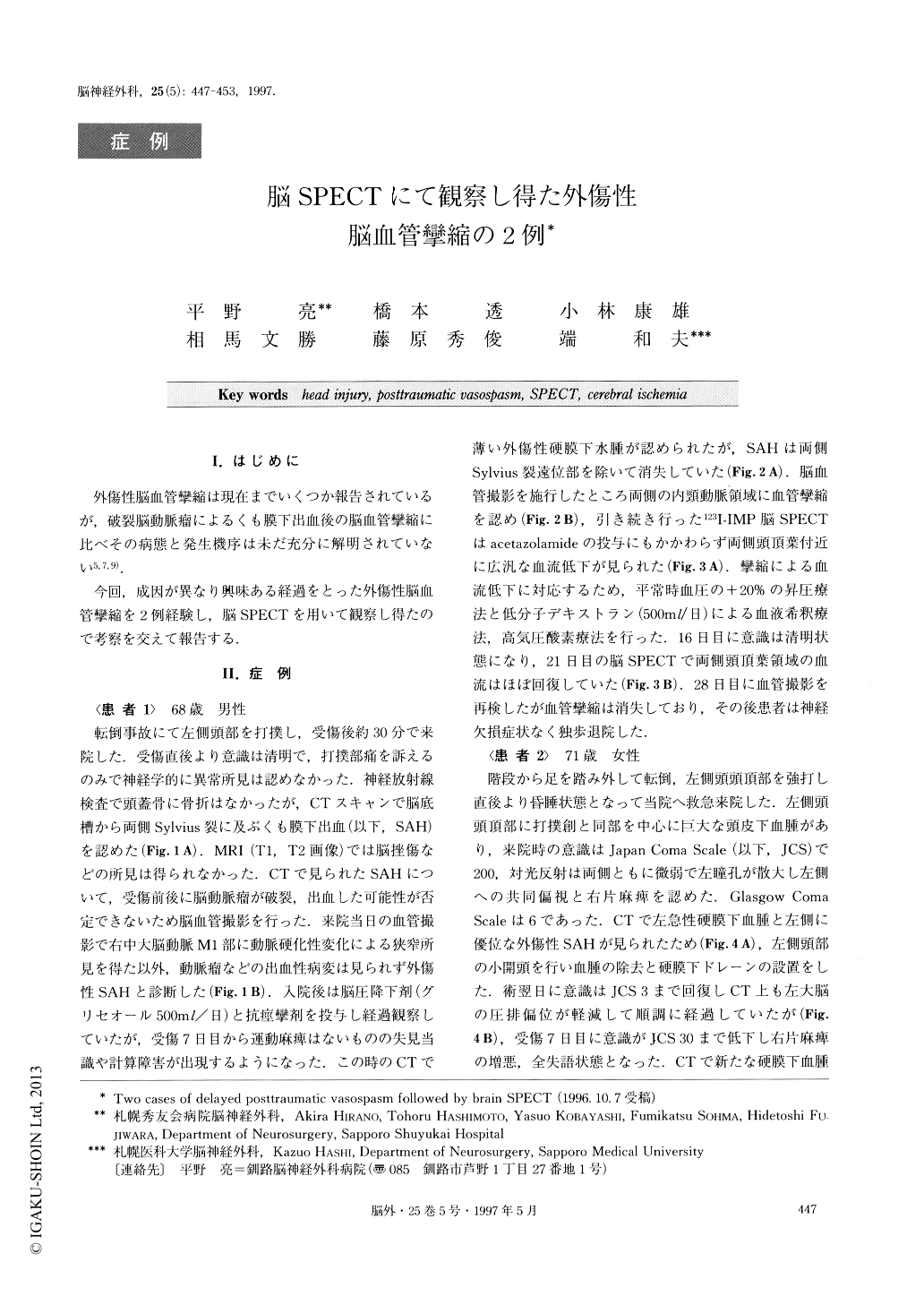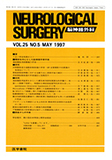Japanese
English
- 有料閲覧
- Abstract 文献概要
- 1ページ目 Look Inside
I.はじめに
外傷性脳血管攣縮は現在までいくつか報告されているが,破裂脳動脈瘤によるくも膜下出血後の脳血管攣縮に比べその病態と発生機序は未だ充分に解明されていない5,7,9).
今回,成因が異なり興味ある経過をとった外傷性脳血管攣縮を2例経験し,脳SPECTを用いて観察し得たので考察を交えて報告する.
This is a report of two cases of delayed posttrauma-tic vasospasm. In case 1, a 68-year-old male was injured by falling. He did not show any neurological deficits on admission. CT scan revealed a diffuse subarachnoid hemorrhage (SAH) without brain contusion. Aneurysm was not disclosed by angiography. On the 7th day after admission,he presented disorientation.Reviewed angio-graphy revealed diffuse delayed vasospasm.123I-IMP brain SPECT showed an extensive low perfusion area in the bilateral parietal portion.
In case 2, a 71-year-old female experienced imme-diate development of a deep comatose state after head injury. CT scan on admission disclosed a massive acute left subdural hematoma and the severe compression of the left cerebral hemisphere by the hematoma. But traumatic SAH was not diffuse and was restricted to the left basal cistern. After emergency operation, her consciousness level improved and the mass effect of the subdural hematoma was diminished. On the 7th day af-ter the operation, her neurological condition worsened.CT scan showed some infarction lesions in the left cerebral hemisphere and mild left cerebral swelling.Angiography on the same day revealed vasospasm in M2-M3 portion of left middle cerebral artery. HM-PAO brain SPECT disclosed low perfusion in the left parietal region, but a state of high perfusion in the other region.
In case 1, vasospasm might have been derived from diffuse clots of traumatic SAH caused by the same pro-cess as postruptured aneurysmal vasospasm.
In case 2, the region of vasospasm was not associ-ated with traumatic SAH. It corresponded to the site of the brain contusion. It was suggested that the cause of vasospasm might have been the direct mechanical in-jury to the arterial wall and chemical substances deriv-ing from the contused brain tissues. We conclude that SPECT or transcranial Doppler monitoring should be used for the early detection of posttraumatic vasos-pasm.

Copyright © 1997, Igaku-Shoin Ltd. All rights reserved.


